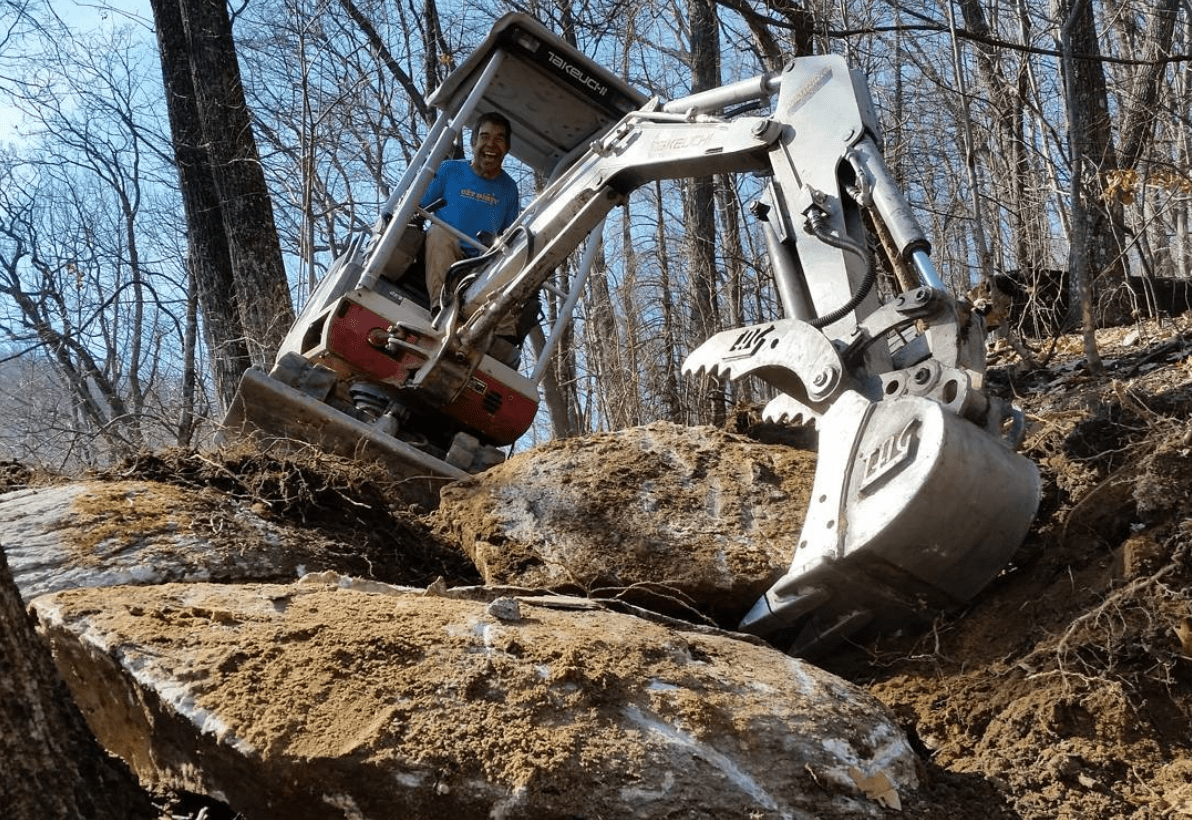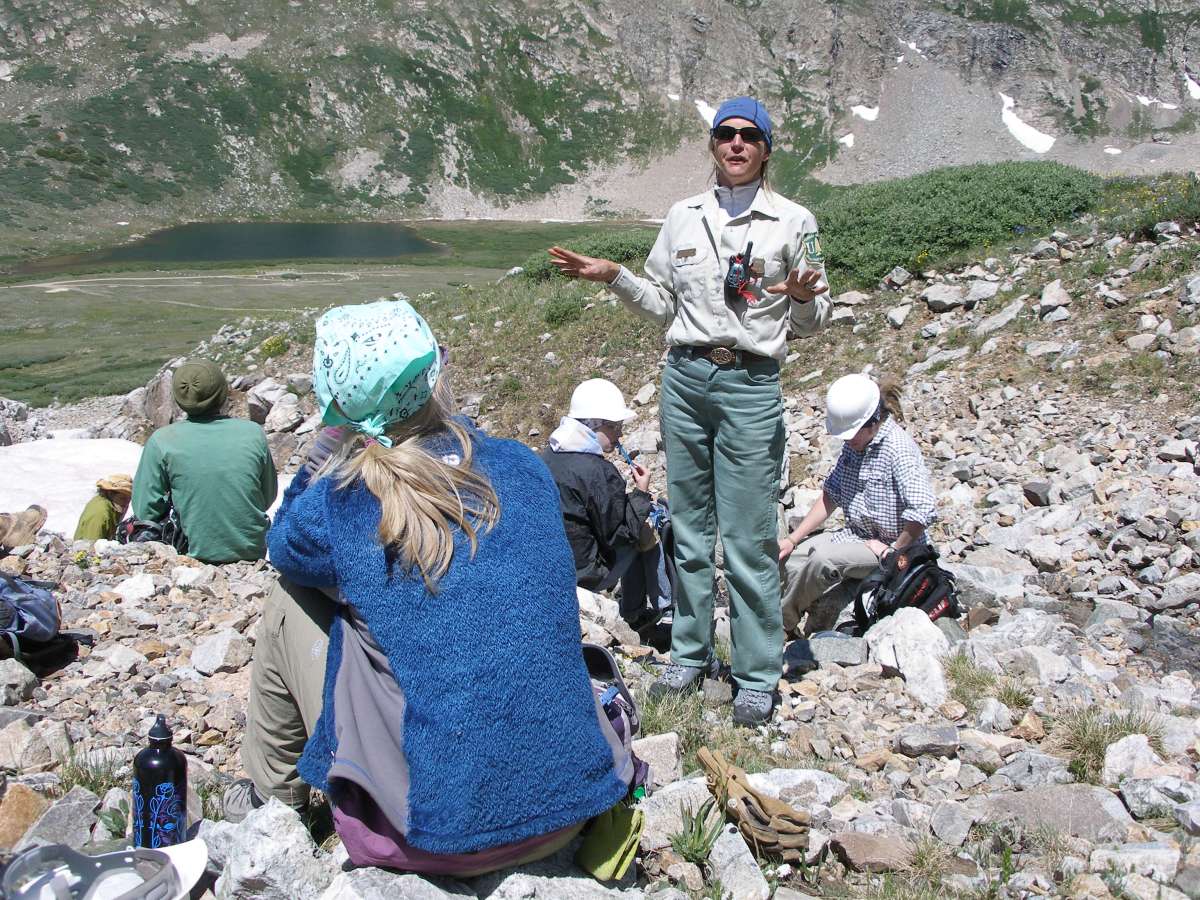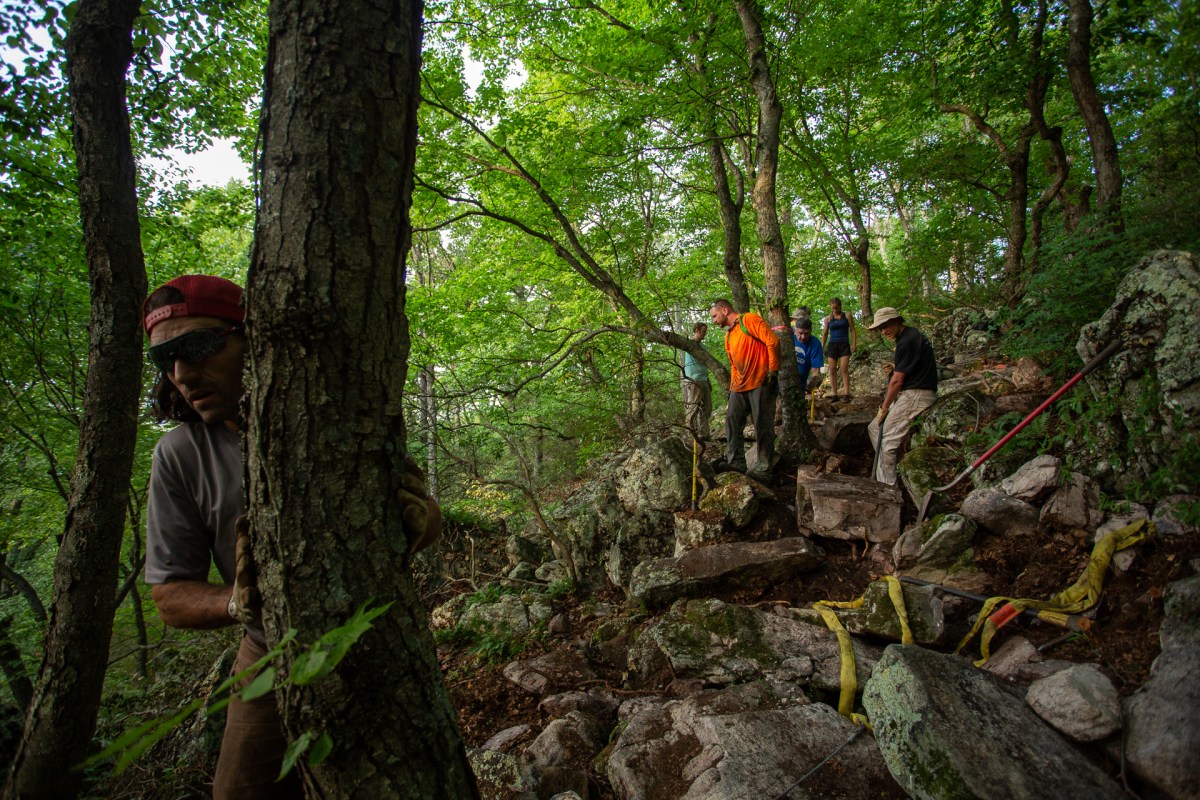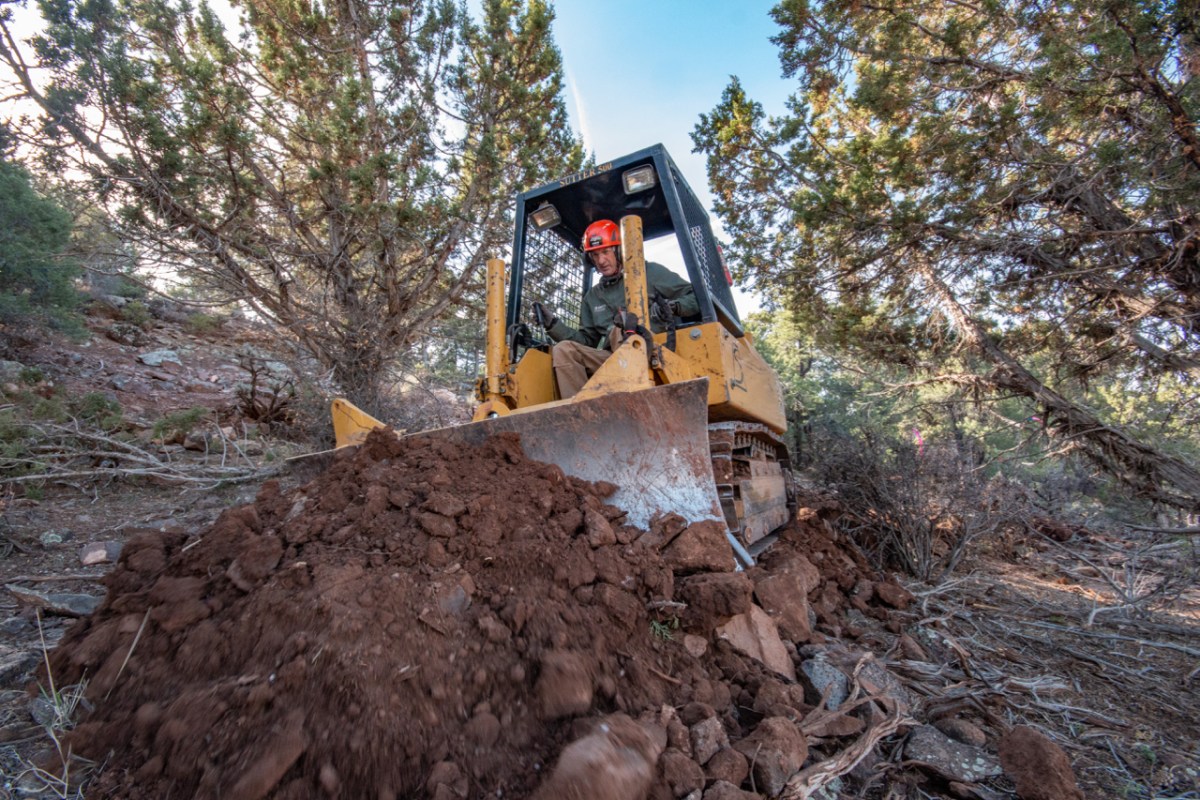CHRIS “SHRIMPER” KHARE
Independent Contractor
Brevard, North Carolina

Photo Credit: Dan Ennis
Chris “Shrimper” Khare is used to working with roots and dirt and rocks and water, first as a landscaper and now as a trail builder. The independent contractor has been at the helm of more than 60 miles of newly built trail near his western North Carolina home, often working alone or with a small team for both municipalities and public lands agencies. His work is anything but smooth and straightforward—take a spin at Rocky Knob Mountain Bike Park in Boone, North Carolina, or on the recently reworked Upper Black Mountain Trail in Pisgah National Forest, and you’ll immediately see that roots, rocks, and in Khare’s words, “things that’ll snag your handlebars,” are standard fare.
“I want it to look like hobbits or gnomes still live there,” Khare says of his trails.
Indeed, the very nature of western North Carolina’s forests lends itself well to gnome-dom. Just this year, that part of the state has already received more than 60 inches of rain. The resulting rhododendron thickets and lush understory (not to mention schedule delays from the waterlogged earth) can either make or break a builder. Couple that with steep sideslope and environmental trail-width restrictions, like Khare’s team’s most recent project at Weed Patch Mountain in Lake Lure, and you’ve got one precarious job site.
“We crammed in 100 switchbacks in eight miles. It’s pretty burly,” says Khare, referring to the challenges of working with tight property boundaries on precipitous terrain. “On a good day I might make 1,000 feet and on a bad day I might go only five. But you gotta think I’m building a trail that’s less than three feet wide with a four-foot-wide Takeuchi excavator. That’s not someplace you’d want to fall off the edge of. Most days I’m within two inches of dying and that’s not bragging.”
Ironically enough, it was fire, not rain, that closed down the Weed Patch project for nearly a year. Khare and his crew were forced to evacuate when the Party Rock fire overwhelmed the work site, eventually burning over 7,000 surrounding acres. Still, be it torrential rain or wildfire, Khare can’t imagine doing anything else with his days.
“We’re a misunderstood bunch. We’re a little mental, we kinda get beat up, but when you see a community form around something you built, that kinda makes you feel good.”
LORETTA MCELLHINEY
Colorado’s Fourteeners Program Manager
Leadville, Colorado

Photo Credit: Colorado Fourteeners Initiative/Lloyd Athearn
In the last 26 years, Loretta McEllhiney has become the single most important person to Colorado’s 58 14,000-foot peaks. The 56-year-old is the Colorado Fourteeners Program Manager, a position with the U.S. Forest Service that she helped create back in 1992 when she first took inventory of summit trails near her home in Leadville.
The damage she found was shocking. Social trails had created 20-foot-wide gulleys that were 10 feet deep in places. Hikers and climbers had unknowingly trampled large swaths of sensitive alpine flora, much of which perishes after as few as five footprints.
In 1994, the Colorado Fourteeners Initiative became its own nonprofit, and in 2001, McEllhiney officially stepped into her current role. Since then, she has helped design and build 39 routes on the 47 fourteeners on forest service land.
Working above 13,000 feet is not for the faint of heart. McEllhiney and her crew start their days at 3am to beat the summertime afternoon monsoons, working for the majority of the day in subfreezing temperatures in order to make the most of their short work season (which is from Memorial Day to Labor Day). Rock slides and lightning are regular occurrences. Once, a goat kicked a large rock, which hit McEllhiney and sent her tumbling down the mountain. Had she not had an ice ax in hand and been able to self-arrest, she is certain she would not have lived.
In 2009, McEllhiney and her team witnessed a military helicopter lose its tail rotor and crash near their worksite on Mount Massive. The crew was able to get one passenger off the mountain but, ultimately, nobody survived the wreck.
“This might sound dark and gloomy, but when I first sit up in my tent in the morning I say, ‘This mountain can kill you today. Don’t let it.’ It always makes me consciously think about my own safety and that of those around me,” she says. “I love the mountains with every cell of my being and I’m going to do everything I can to try and protect them.”
THOMAS JENKINS
Shenandoah Valley Bicycle Coalition Cofounder
Harrisonburg, Virginia

Thomas Jenkins (left). Photo Credit: Jess Daddio
Wedged between the Blue Ridge Mountains to the east and the Allegheny Mountains to the west, Virginia’s Shenandoah Valley contains a unique blend of fertile fields and craggy ridgelines. That diversity in terrain has turned Harrisonburg, Virginia, from a quaint college town to a bustling biking mecca; less than 30 minutes away are some of the largest national forests in the east, the George Washington and Jefferson National Forests.
What this area lacks in elevation—one of the highest points, Reddish Knob, is just under 4,400 feet—it makes up for twofold in the sheer number of rocks. Mountain biking here is notoriously technical, which is what initially drew Shenandoah Valley Bicycle Coalition cofounder and bike shop owner Thomas Jenkins to Harrisonburg (aka “Rocktown”). As a trail builder, his rock sidewalks and rock bridges have become hallmarks of the local singletrack, but hand-building trail out of sandstone boulder fields (where rocks can weigh upwards of two tons) presents its own set of challenges.
“This summer, for example, [our volunteers] finished 650 feet of trail at a rate of about one foot per man-hour. That’s pretty damn slow,” he says. “Still, there’s nothing like building by hand. You can do a lot with a griphoist and rock bars. It really makes you appreciate what it took to build the pyramids.”
One of the most impressive of Jenkins and the coalition’s hand-build projects is the 2,000 Hours Trail located on Massanutten Resort’s Western Slopes. Named for the 2,000 person-hours it took to complete the mile-long trail, “2K” is a masterpiece of buttery berms, seamless step-ups and step-downs, and those iconic rock sidewalks.
https://www.instagram.com/p/BntZIHGnZ23/%5D
https://www.instagram.com/p/BntZIHGnZ23/%5D
JOEY KLEIN
IMBA Trail Solutions Trail Specialist
The Open Road

Photo Credit: Tyson Swasey
It would be easier to list where Joey Klein hasn’t built trail than where he has. One of the masterminds behind IMBA Trail Solutions, Klein has worked both solo and alongside other IMBA Trail Solutions team members to build mountain biking singletrack in nearly every state and in 14 other countries. In 2014 alone, Klein singlehandedly conceptualized the design for 1,000 miles of trails in 10 states.
Which is to say that Klein spends a lot of time in the woods and, consequently, has had a lot of interesting encounters.
Take that time in Mexico, for example, north of Puerto Vallarta, when Klein had to move a seven-foot-long rattlesnake “as big around as a coke can” from the trail. Or, when scouting the trails for Colorado’s Staunton State Park he nearly stepped on a sleeping bear. Or, while flagging trail in Arizona’s Black Canyon stray bullets whizzed over his head. Or, in the midst of surveying Tasmania’s Dismal Swamp a tiger snake chased him through head-high grass.
“I have the biggest respect for all trail builders, doesn’t matter if you’re in British Columbia or Big Bend, hats off, because there’s always going to be some sort of environmental challenge, right? From the bugs to the heat to the cold to the wet there’s always gonna be one thing that’s just gonna drive you crazy,” he says.
For Klein, the demands of the job are worth it (bugs notwithstanding). He’s seen trail systems give small towns a second chance and point-to-point singletrack connect long-lost friends. Given how far the trail-building scene has grown since he first worked as part of the Subaru-IMBA Trail Care Crew in 1999, Klein is certain the future for trails everywhere is brighter than ever.
